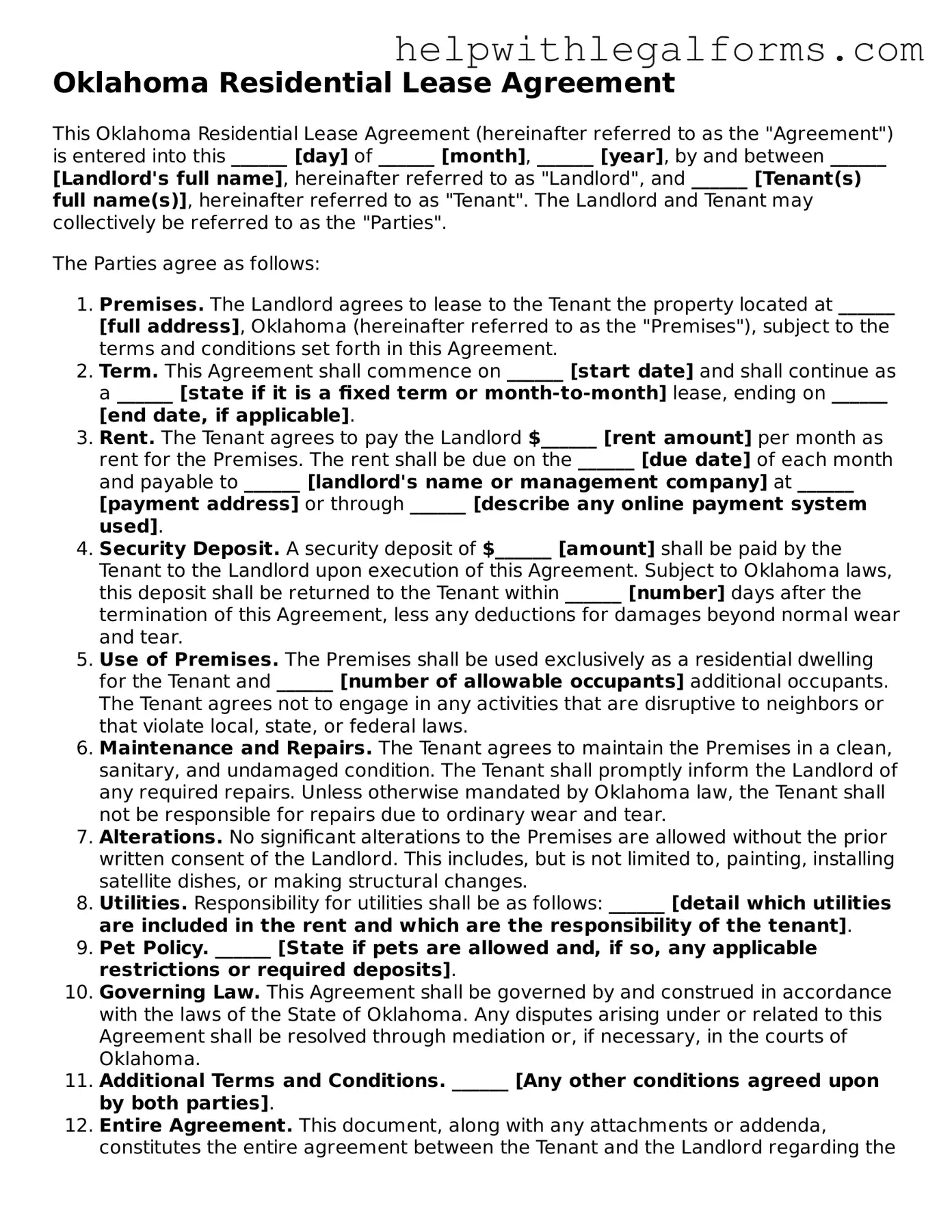What is an Oklahoma Residential Lease Agreement?
An Oklahoma Residential Lease Agreement is a legally binding document between a landlord and a tenant that outlines the terms and conditions for renting residential property in Oklahoma. This agreement specifies details such as rent amount, payment schedule, security deposit, and the lease term.
How long does a standard residential lease last in Oklahoma?
Most residential leases in Oklahoma are set for a fixed term of 12 months. However, the duration can vary based on mutual agreement between the landlord and the tenant, ranging from short-term leases to longer periods.
Are there any specific disclosures that must be included in the Oklahoma Residential Lease Agreement?
Yes, Oklahoma law requires certain disclosures to be included in the lease agreement, such as the presence of lead-based paint in properties built before 1978 and the landlord's name and address for legal notices. The lease may also include other disclosures as required by local laws or agreed upon by the parties.
Can a security deposit be collected by the landlord in Oklahoma? If so, is there a limit?
Yes, landlords in Oklahoma can collect a security deposit from tenants. State law does not specify a maximum limit for security deposits on residential leases, but it's common practice to charge the equivalent of one month's rent. The deposit must be returned to the tenant within 45 days after the lease ends, less any deductions for damages or unpaid rent.
What happens if the tenant breaks the lease early in Oklahoma?
If a tenant breaks the lease early, they may still be responsible for the rent for the remainder of the lease term unless the landlord is able to re-rent the unit. Oklahoma law requires landlords to make a reasonable effort to find a new tenant. However, the original tenant may be charged for costs associated with re-renting.
Is renter’s insurance required in Oklahoma?
While Oklahoma law does not mandate renters to have insurance, landlords can require tenant insurance as a condition of the lease. This helps protect the tenant's personal property and may cover liability in certain situations.
How are repairs and maintenance handled in an Oklahoma lease agreement?
The lease agreement should clearly outline the responsibilities of both the landlord and the tenant regarding repairs and maintenance. Typically, landlords are responsible for ensuring the property is habitable and in good repair, while tenants may be tasked with routine maintenance and minor repairs, especially those resulting from the tenant's negligence or misuse.
Can a landlord enter the rented property without notice in Oklahoma?
No, landlords in Oklahoma must provide tenants with reasonable notice before entering the rented property, except in emergencies. The lease agreement usually specifies how much notice will be provided, typically at least 24 hours. This ensures the tenant's right to privacy is respected while allowing landlords access for inspections, repairs, and maintenance.
Where can I get an Oklahoma Residential Lease Agreement form?
Oklahoma Residential Lease Agreement forms can be obtained from several sources, including real estate agents, online legal document providers, or legal aid organizations. It's important to ensure any lease agreement used complies with Oklahoma law and includes all required terms and disclosures.
